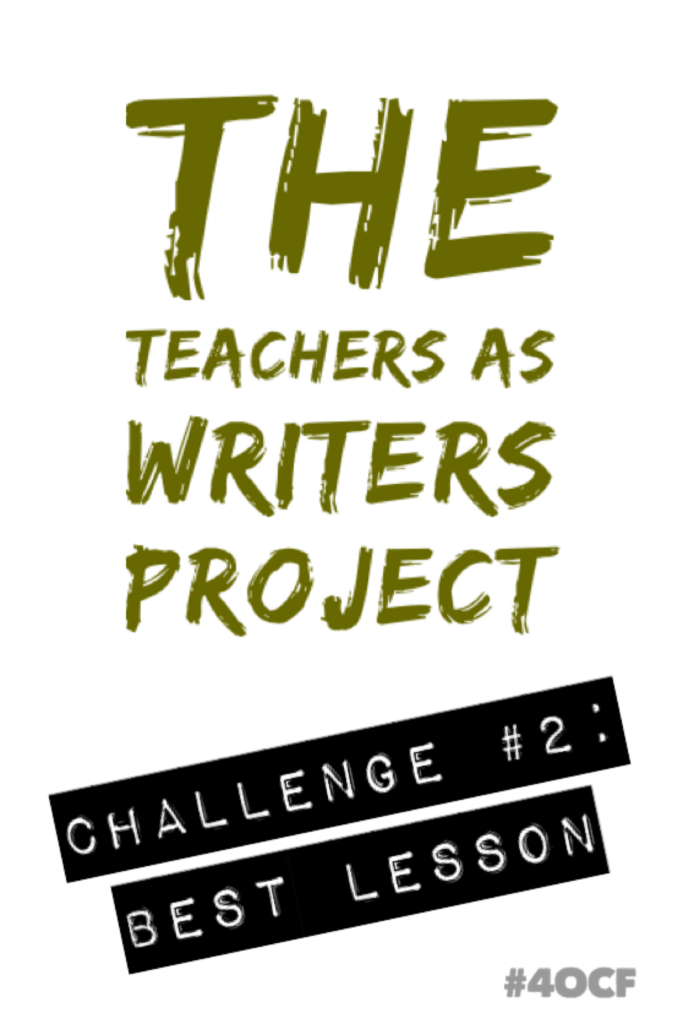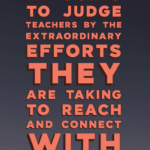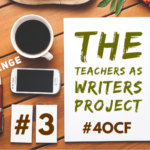Last week, I challenged teachers everywhere with the Teachers as Writers Challenge #2. Here is what I wrote:
Describe the best lesson you’ve ever taught.
So which of my lessons was the best? Several popped into my mind.
- There was the Socratic discussion I had facilitated with my fifth grade class on social justice and the civil rights movement during a social studies lesson. The discussion was uncomfortable because students asked difficult questions. But I feel like students left the two day discussion with a better understanding of social justice, because they internalized it for the rest of the year, and it changed their behaviors and actions.
- Was it our study of plants when I let students list the questions they had about plants, and then provided support as they decided how to share what they learned with classmates? Some groups created slide presentations, some gave oral reports, and one group dressed up a classmate as a Flower. Complete with brown sweatpants to represent his roots, green shirt to represent his stem, and a mask labeled with the other parts of the flower, he stood in the front of the class to teach and entertain. The group showed the class how shade and lack of light could impact the growth of a flower, with the student pantomiming one of the most Oscar-worthy death scenes I’ve ever seen a student acting like a flower participate in. We all learned that day.
- Could it be the math lesson where a student taught his very own method for long division? Students had the opportunity to learn the “Keville Method for Long Division,” from a classmate who saw numbers in a different way. Several students within the class found the alternative method easier than traditional long division, and the fact that it was a classmate who showed them (and not me!!!) ensured that they would continue to use this approach long after they had gone from my classroom.
As I thought about the many lessons that I taught over the years – the good, the bad, and the ugly – I realized that the best lessons all had one thing in common. Those lessons were all driven by students. If we want to use an educational buzzword to describe these lessons, we would call them student-centered. Students were able to internalize and own the learning because they were involved in creating the knowledge during the lessons. When students own the learning in this way, they are able to maintain that knowledge base well beyond a chapter or unit test, and well beyond the class. Because they have guided the learning process, the learning belongs to them forever.
Rich




